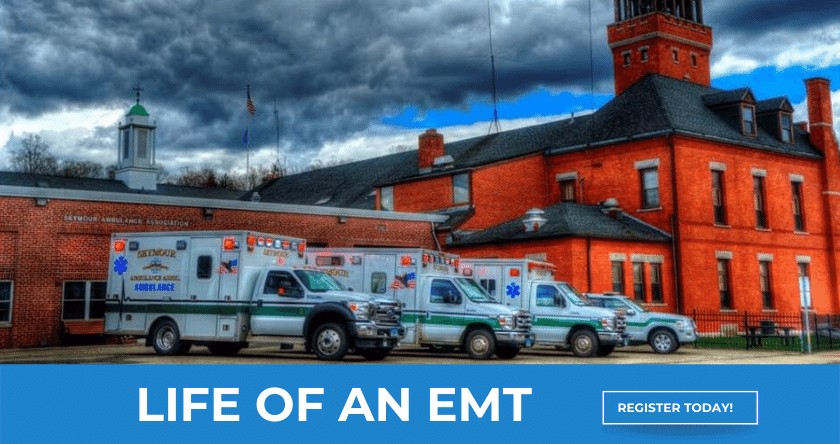While deciding to pursue an EMT career may not be the highest paying job, the rewards that go with the position often level out the playing field in the eyes of those who practice. While most people know that an EMT career aids in saving lives, many people don’t understand what goes into the day-to-day life of an EMT.
The Ups and Downs
As with any profession, being an emergency responder has its ups and downs. It may be obvious that EMTs often put themselves in the line of danger. Responding to a call to care for someone from a gun wound, flying to the scene of a bomb sight, or even being on the scene of a recent motor vehicle accident, EMTs put their lives in danger on a regular basis. In fact, death rates amongst EMTs in the line of duty are comparable to firefighters and police. Additionally, because of the intensity of the job, divorce, suicide, and substance abuse rates are high. While these disadvantages are present, many EMTs have a positive experience with the job.
On the high end, you will be a major player in a life-changing event. Of course, you won’t remember every patient you treated, but they will remember you. In fact, some may never forget you. Many EMTs talk about being approached by former patients, years later, with enthusiasm and the need to say thanks. Being able to respond to patients in their most vulnerable times allows you to leave a mark on people’s lives in a way most people can’t. And, in some cases, you will leave that mark for the rest of that person’s life. What a profound honor it is to be able to make someone’s life better.
The Basics of the Job
The process of becoming an EMT takes a lot of dedication. Not only are there long hours on the job, but the training that is involved with getting certified is also extensive. Once you have passed the exam, shift life begins. In many cases, you will be assigned long shifts, some that are even overnight. And, your responsibilities cover more than just responding to calls. When you first report to the station, the ambulance needs to be thoroughly checked. While it is the responsibility of the previous shift to make sure the ambulance is stocked and ready to go, one can never be too careful. Properly checking the rig can be a matter of life or death, especially if medical equipment and supplies aren’t properly functioning and stocked. There is a written checklist that EMTs follow to be sure they have covered every aspect of their inspection. Even checking to be sure there is enough gas in the ambulance is an important part of the process. This entire process is a hassle, but it is necessary.
In addition to properly inspecting your rig, it is important that EMTs know the area they are assigned to. This way, when a call comes in, they can get there as fast as possible. Once on scene, EMTs are trained to ask questions and get a thorough health history. They take vital signs. Transfer patients to the proper facilities. And, are sure to deliver fast and responsive treatment. Injuries that are treated can range from life-threatening issues, such as gunshot wounds and extensive injury from motor vehicle accidents, to minor complaints such as a stomach ache or broken limb. Whether serving as the crucial link that brings patients to the hospital in rural areas or coordinating lifesaving care in urban areas, EMTs work as a unit with firefighters and police to deliver the care patients need in an emergency.
An EMT career is a decision that takes a lot of thought. But once you have fully committed to the career, the personal interaction you have within the community you serve leads to a positive impact on your life and the lives of those directly affected by your care.
Contact us today if an EMT career is right for you or to learn more.


Recent Comments